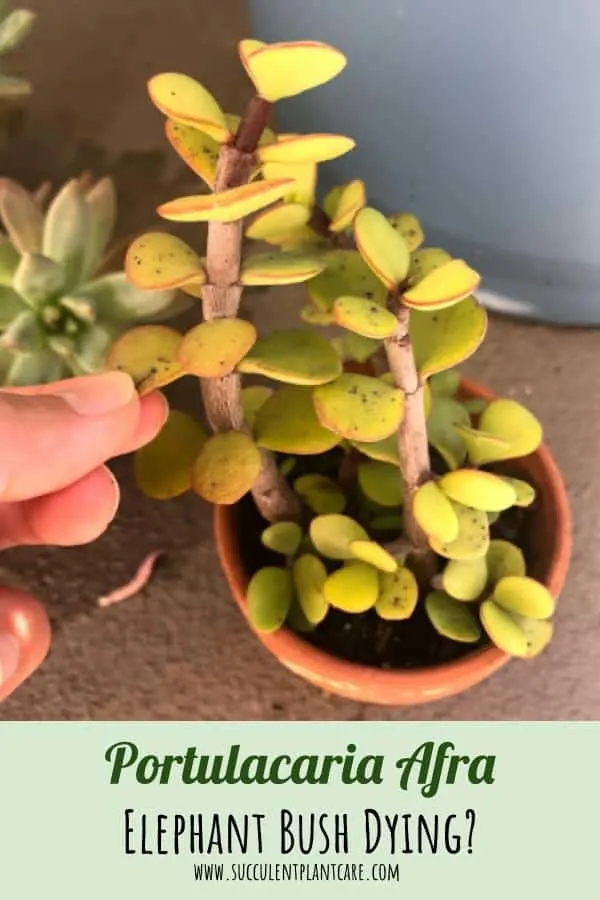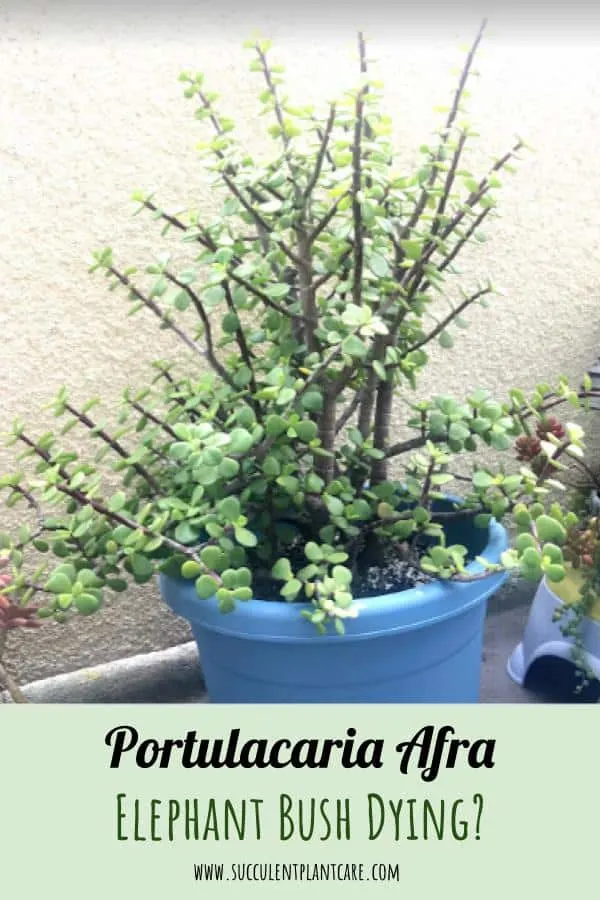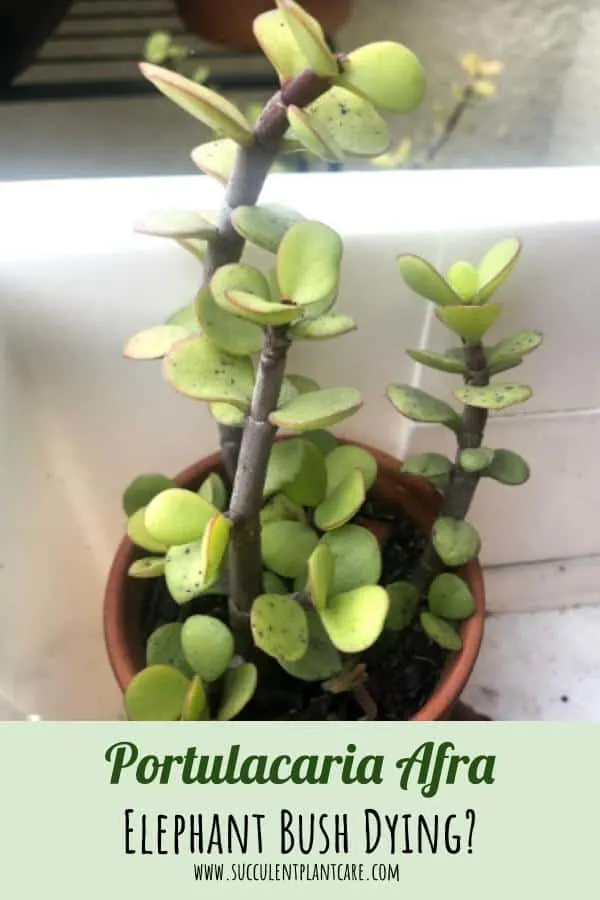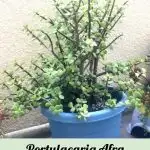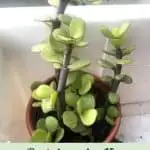Are you having trouble with your Portulacaria Afra? Then you’re probably tired of hearing how easy and resilient these plants are. While it’s true that Portulacaria Afras are easy-going plants, you can still run into problems when caring for them. What are some of the common problems with Portulacaria Afra plants? How can you save a dying plant?
The most common problem people have with this plant is dropped leaves.

Why are the leaves falling off your Portulacaria Afra?
The most likely reason for dropped leaves is watering issues. A portulacaria afra that is too wet will look sickly and drop leaves. The dropped leaves might appear yellowish in color and could feel squishy. This usually happens when the plant has been overwatered and/or the soil medium does not dry out fast enough, or both.
If severely overwatered, the stems of the plant would start rotting from the bottom. The first sign of this is the stem turning brown/black from the bottom. A plant with constant ‘wet feet’ that does not get enough sunlight rots faster as the plant is not given a chance to dry out.
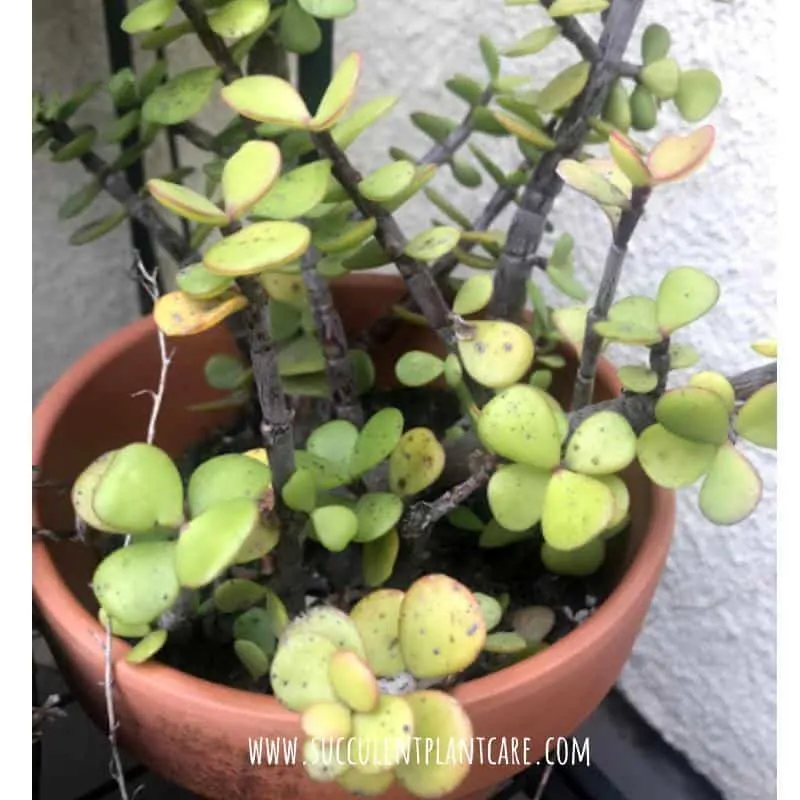
How to fix a wet plant
The quickest way to solve this issue of a ‘wet’ Portulacaria Afra is to let it dry out. I do this by removing the plant from the soil and letting it dry completely for about a week or two in a shaded area away from direct sunlight. These plants can withstand long periods of drought so you can let them dry for a few weeks and they would be fine. After the plant has been allowed to dry and recover from the wet environment, replant in fresh potting soil.
If the plant has already started rotting from the roots up to the stem, you can still save the plant by cutting the rotten parts off and saving the stem cuttings. Dry the stem cuttings for about a week or longer and stick the cuttings in soil.
Portulacaria Afra generally likes fast-draining soil. To be on the safe side, I use cactus mix combined with perlite or a very porous mix like cactus jack. You can also use an all-purpose potting soil (which is a cheaper alternative) and combine it with perlite, or a combination of these three materials I mentioned. Click here to find some of the materials I mentioned.
Make sure the pot you are using is not too big for the plant you are potting. I try to choose a pot that is just the right size for my succulents with a few inches extra for them to grow. If the pot is too big you run the risk of having too much soil for the plant and depending on your watering technique and the soil you use, the plant can either be too dry or too wet. Your best bet is to choose a pot that is not too big and also not too deep for the plant.
What if the plant is too dry?
Aside from the plant being too wet, the plant will also drop its leaves if it’s too dry. This usually happens when the plant is being underwatered and/or the soil medium is too fast draining and unable to retain any moisture at all.
I tend to underwater my succulents, including my Portulacaria Afra plants so I often see my plants shriveled. If a plant is constantly too dry, it starts to drop its leaves to conserve water. The bottom leaves usually go first, but leaves can drop from anywhere along the stem.
How to fix a dry plant
A quick solution to this is to give the plant a good drink of water. It should perk back up within a few days of watering and the leaves will appear plump again and not shriveled. You may want to increase the watering frequency if you find this happening to your plant often.
I believe it’s easier to fix an underwatered succulent than an overwatered one. That’s why I tend to leave my succulents on the dry side.
If your plant looks shriveled no matter how often you water and you notice that the water goes right through the pot almost immediately after watering, the plant may not be absorbing any water. Either the soil is too fast draining or it’s the wrong material for the plant.
Transplant the plant in a suitable potting mix. As I mentioned above, I like to use cactus mix combined with perlite. If you don’t like mixing materials you can use a very porous mix like cactus jack. You can also use an all-purpose potting soil (which is a cheaper alternative) and combine it with perlite, or a combination of these three materials I mentioned. Click here to find some of these materials online.
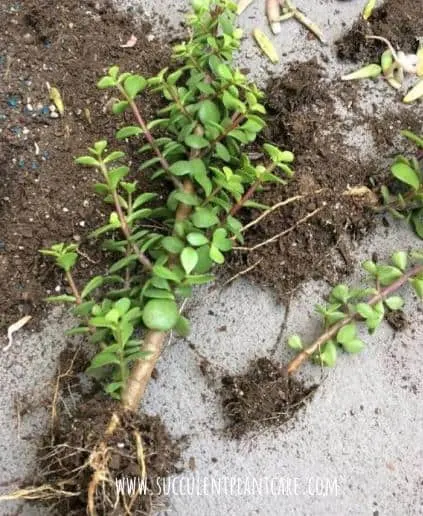
What if you use the wrong Soil?
Another very common reason for dropped leaves is using the wrong soil medium. The wrong soil, coupled with the wrong watering technique, can make your plant deteriorate rapidly. This usually happens with a newly purchased plant from the store. You bring the plant home and start caring for it. A few weeks later, it starts looking sick, drops its leaves, and you don’t know what you did wrong.
Most likely, the plant has been sitting in the wrong soil which either makes it retain too much water, or not enough water. You become confused and start doing either of these two things: You either start watering your plant more because the leaves have shriveled and fallen off, or you withhold watering because the leaves have fallen off and the plant looks too wet. Or you may even go back and forth between the two.
Chances are, you didn’t do anything wrong in the first place. The plant was destined to perish because of the wrong soil medium. What I like to do when I get a brand new plant from the store (it doesn’t matter from what store, it could be from the hardware store, grocery store or even from a fancy florist) is to repot the plant. It doesn’t need to be repotted immediately but the sooner, the better.
Can your dying Portulacaria Afra still be saved?
Due to plenty of mishaps I’ve encountered with my plants over the years, my answer to this question is almost always yes. And from experience, the easiest and quickest way to save the plant is to remove it from the pot, let it dry and recover for about a week or so, and transplant it into a brand new potting mix.
By now you may have noticed something–that I’ve mentioned repotting as the solution for almost all problems with this plant. That’s because it usually is. From my experience with this plant or other succulents, you can save a dying plant by repotting it in more suitable soil and the right size pot.
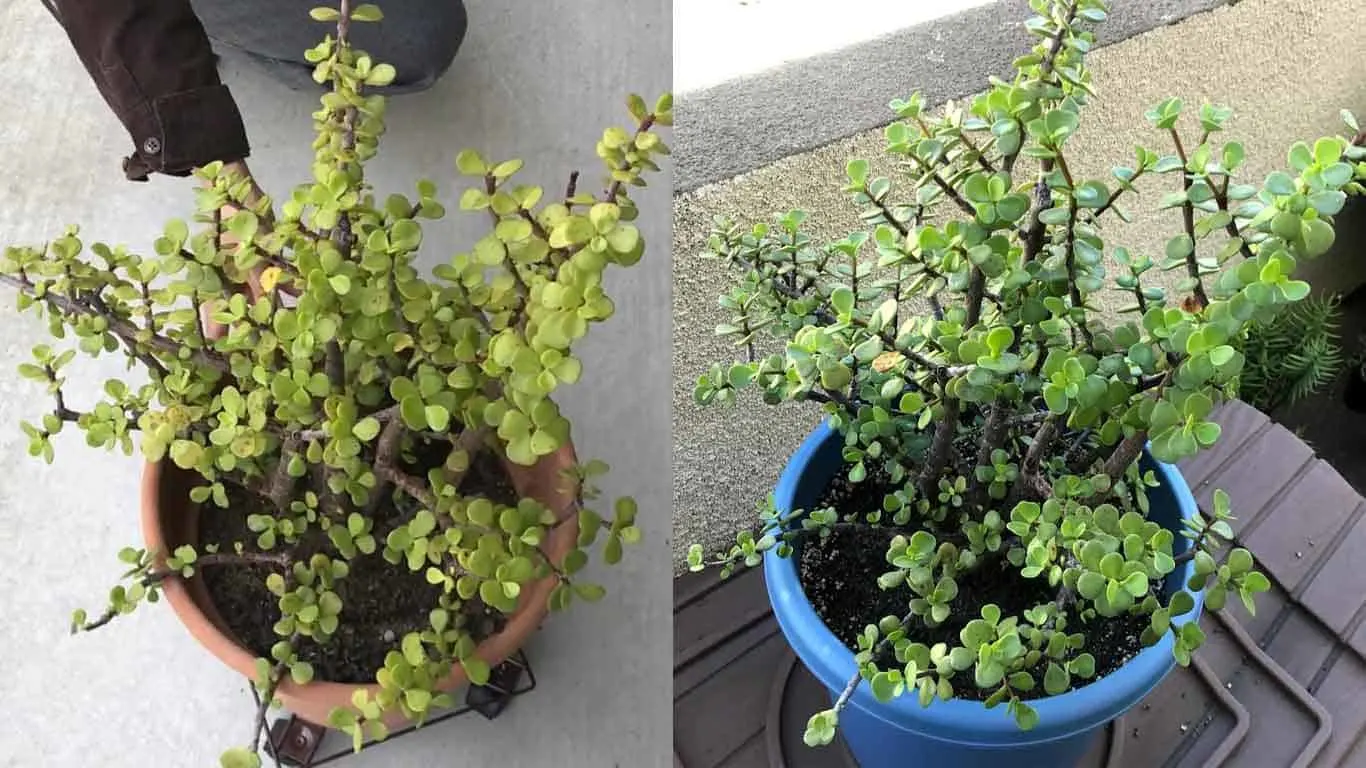
Make sure the pot you are using is just the right size for your plant, not too big so your plant is not drowning, and not too small that it will outgrow the pot very soon. As I mentioned above, Portulacaria Afra plants generally like fast-draining soil. To be on the safe side, I like using cactus mix combined with perlite. You can also use an all-purpose potting soil (which is a cheaper alternative) and combine it with perlite. Or if you do not like to mix materials you can use a very porous material like cactus jack. Click here to find these online.
If the plant is dying, that means it’s starting to rot or shrivel and look really sick, or a combination of both. You can still save the plant by saving the viable parts of the plant. Remove or cut off any visible rot, let the cuttings dry for a few days to about a week or so, then stick them in the soil to root.
Keep away from direct sunlight and water when dry. In a few weeks’ time, you will see new growth and new roots develop.
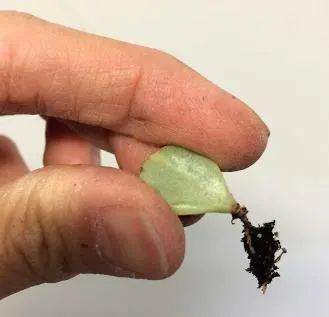
Can you save the leaf of a Portulacaria Afra and replant?
Yes, but it is not my preferred method of propagation because it takes too long and I tend to lose the leaves before it propagates successfully. If you want to save some healthy leaves to propagate, it can be done but you need to be patient as it takes a long time. Make sure you also save some stem cuttings because they are easier to propagate and you’ll have greater success rates with them than leaves alone.
How much sunlight does the plant need?
Partial sun to full sun is well tolerated by this plant. I have some growing happily under the morning sun and also some in the full afternoon sun. I believe these plants are happier outdoors than indoors, so give them some outdoor time during the warmer months to keep them happy.
If you must grow your plant indoors, make sure to find the brightest spot in the house. The plant needs approximately four hours or more of sunlight a day to be happy. If you find that the plant is not receiving adequate light, move it closer to the window where it can get more sun exposure.
Not enough sunlight plus a constantly wet plant is a recipe for disaster for these plants so make sure you choose the brightest spot in the house. South or west-facing windows are ideal, and an east-facing window may also work.
If the location is not working out for your plant, move it to a brighter location. A grow light may help supplement the sunlight that the plant needs. Here are some grow light recommendations.
If possible, give the plant some outdoor time during warmer months and the plant will love the sun. Start with morning sun first to prevent shocking the plant as the morning sun is less harsh than the afternoon sun.
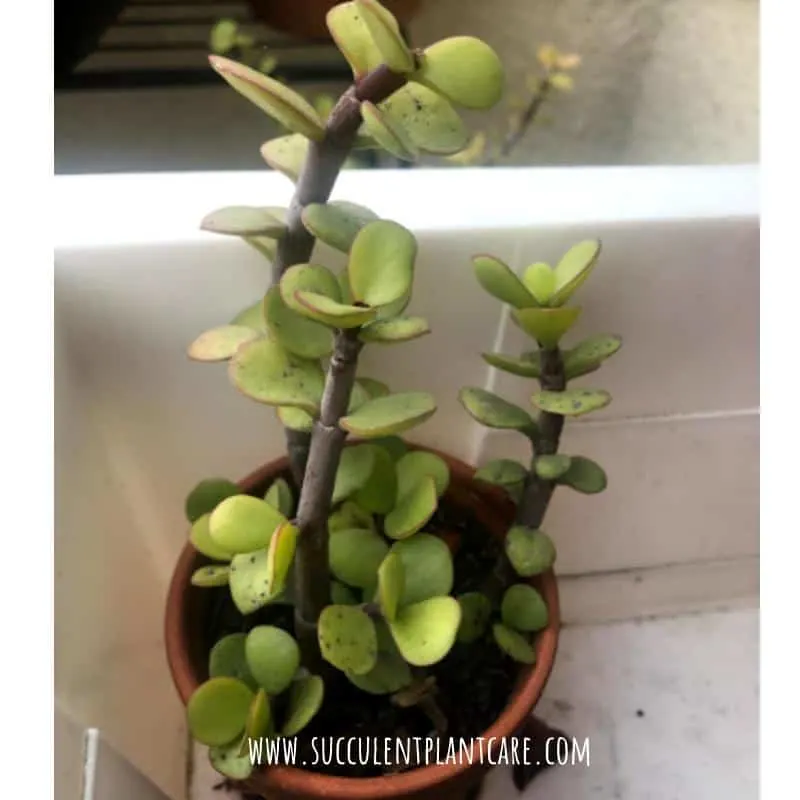
Sudden temperature changes can affect the plant
When bringing the plant indoors for the winter, the plant might go through a period of adjustment and start dropping leaves, especially if the change in environment is drastic. The plant might be going through shock and it will take some time for it to adjust.
The best thing you can do is to leave the plant alone and minimize the shock to the plant during periods of sudden changes so avoid repotting, propagating or pruning the plant at this time. Hold back on watering until the plant is dry. You can check the soil first to see if it is dry before watering.
When bringing the plant indoors from outside, acclimate the plant indoors by providing as much sunlight indoors as possible, especially if the plant is used to full sun. Move it to a windowsill or the brightest spot in the house. Likewise, when bringing the plant outside from indoors, avoid setting the plant in full sun right away.
You can start with morning sun and gradually increase the intensity to minimize shock and avoid burning the plant. If you find your Portulacaria Afra dropping leaves from sudden changes in the environment, give the plant some time to adjust. It will regrow new leaves again once it gets acclimated to its new surroundings.
Frost Tolerance
Hailing from South Africa, these plants are generally not frost-tolerant. You can lose the plant pretty fast when it is exposed to extreme cold, especially a young, tender plant. Portulacaria Afra can withstand temperatures as low as 20℉ to 25℉ or -3.89℃ to -6.67℃. The plant may be able to survive freezing temperatures for short periods of time, as long as they get enough warmth or sunlight during the day. But it won’t be able to survive prolonged periods of freezing temperatures.
Move the plant indoors or provide some protection from frost to help the plant survive the cold. Here are some frost protection recommendations.
These are some of the most common problems you will encounter with Portulacaria Afra plants and some simple solutions you can do to save your plant. I hope you found this article useful. Thanks for visiting and as always, happy gardening! Check out these links for related topics:
Portulacaria Afra-Elephant Bush Care, Types and Propagation
Easiest Way to Propagate Succulents: by Stem Cuttings
Visit my resource page for suggestions on where to find a Portulacaria Afra plant and other succulents online.
Here’s our youtube video on this topic.
Pin this to save for later or share with others now!
